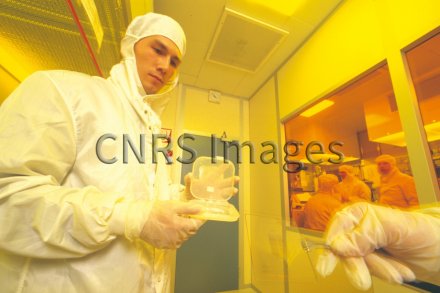Production year
2000

© Laurence MEDARD/CNRS Images
20000001_1174
Masque pour la lithographie optique. Le masque est placé sur un substrat, puis du métal, chauffé par un faisceau d'électrons, est déposé dessus ; les parties non protégées par le métal peuvent ensuite être gravées. Cette opération se fait au moyen d'ions rendus chimiquement actifs, ce qui a le double avantage d'accélérer le processus et d'éviter d'attaquer le masque. Salle blanche (Réf. Le journal du CNRS Mai 2000).
The use of media visible on the CNRS Images Platform can be granted on request. Any reproduction or representation is forbidden without prior authorization from CNRS Images (except for resources under Creative Commons license).
No modification of an image may be made without the prior consent of CNRS Images.
No use of an image for advertising purposes or distribution to a third party may be made without the prior agreement of CNRS Images.
For more information, please consult our general conditions
2000
Our work is guided by the way scientists question the world around them and we translate their research into images to help people to understand the world better and to awaken their curiosity and wonderment.